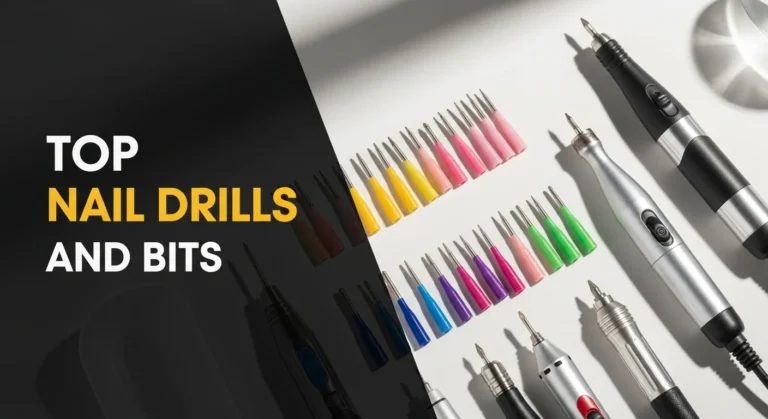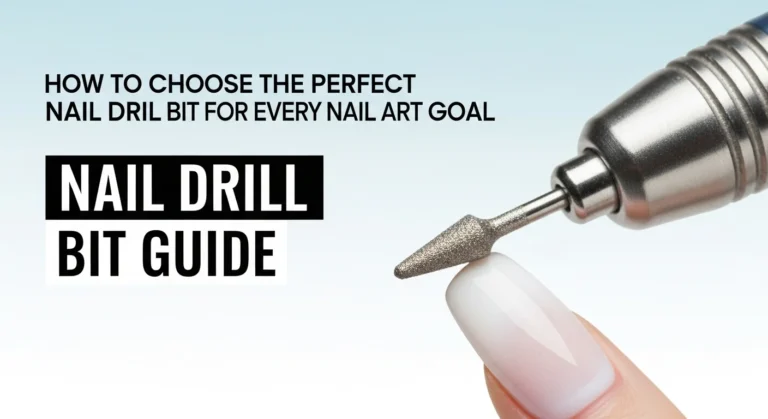Nail Drill Guide: Uses, Safety, and Practical Tips
A nail drill is a multifunctional tool widely used in nail care, from salons to podiatry clinics. While it can save time and provide precise results, safe and effective use requires understanding of proper techniques, appropriate bit selection, and hygiene practices.
A nail drill (also called an electric nail file or e-file) is a handheld device commonly used in nail care and enhancement services. It uses interchangeable bits that rotate at various speeds to file, shape, smooth, and remove materials from natural or artificial nails.
This guide provides neutral, fact-based information to help users understand how nail drills work, their applications, safety considerations, and maintenance.
What Is a Nail Drill?

- Definition: An electrically powered tool with a rotating tip (bit) used in professional and at-home nail care.
- Primary function: Filing and refining nails more quickly than manual nail files.
- Users: Nail technicians, podiatrists, and some at-home nail care enthusiasts.
Common Uses of Nail Drills
Nail drills are versatile tools with different applications depending on the type of bit used.
In Nail Salons
- Removing gel polish, acrylic, or dip powder
- Shaping and refining artificial nail extensions
- Preparing the nail plate for product application
- Cleaning under and around nails
In Podiatry
- Reducing thickened toenails
- Smoothing fungal-damaged nails
- Treating corns and calluses
Key Components of a Nail Drill
| Component | Description |
|---|---|
| Handpiece | The part held in the hand; houses the motor and bit holder. |
| Control Box | Adjusts speed, direction, and sometimes torque. |
| Bits | Interchangeable heads with different shapes, materials, and grits. |
| Foot Pedal (optional) | Allows speed adjustment without using hands. |
Types of Nail Drill Bits
Bits come in various materials and shapes, each suited for specific tasks.
- Carbide bits – Durable, used for acrylic removal and shaping.
- Diamond bits – Gentle, commonly used for natural nail preparation.
- Ceramic bits – Produce less heat, used for refining and smoothing.
- Mandrel + sanding bands – Disposable options for surface filing and shaping.
Safety Considerations
Improper use of nail drills can lead to injury or nail damage.
- Training: Professional instruction is recommended before use.
- Speed control: High speeds can cause heat buildup and discomfort.
- Pressure: Excessive pressure may damage the nail plate or skin.
- Hygiene: Bits should be cleaned and disinfected after every use to prevent infection.
- Protective gear: Dust masks, eye protection, and ventilation reduce inhalation of nail dust.
Choosing the Right Nail Drill (Key Factors)
When selecting a nail drill, users often consider:
- Speed (RPM): Higher RPM allows faster material removal; 20,000–30,000 RPM is typical for professional use.
- Torque: Determines how effectively the drill can work under pressure.
- Weight and ergonomics: A lighter handpiece reduces strain during extended use.
- Noise and vibration: Lower levels improve comfort.
- Bit compatibility: Standard shank size is 3/32 inch.
Maintenance and Cleaning
Proper care extends the lifespan of a nail drill and ensures safe use.
- Remove dust from vents and handpiece regularly.
- Clean and disinfect bits after each client.
- Lubricate handpiece if recommended by manufacturer.
- Store in a dry, dust-free environment.
Common Questions (FAQ)
Q: Can beginners use nail drills at home?
- Yes, but caution is advised. Start at low speeds with fine-grit bits to reduce risk of damage.
Q: Do nail drills damage natural nails?
- Not if used correctly. Damage usually occurs from excessive pressure, speed, or improper technique.
Q: How often should drill bits be replaced?
- Diamond and carbide bits last months with proper cleaning, while sanding bands are single-use.
Q: Are nail drills only for artificial nails?
- No. They are also used in natural nail prep, pedicures, and podiatry treatments.




